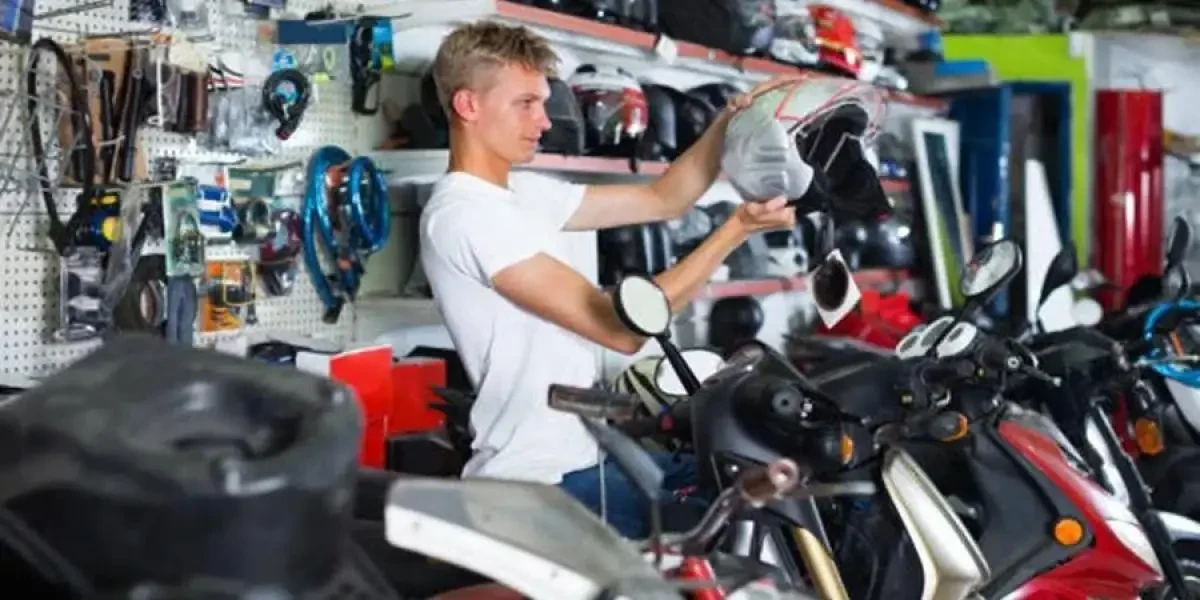Discover High Quality Moto Parts NZ for All Your Motorcycle Needs
Discover High Quality Moto Parts NZ for All Your Motorcycle Needs
Blog Article
An In-depth Consider Motorcycle Components: What Every Biker Needs To Know
A detailed understanding of motorbike parts is not just advantageous yet important for any cyclist aiming to optimize efficiency and safety. Each element, from the engine's intricate functions to the integrity of brake systems, plays a crucial role in the overall experience and functionality of the bike.
Understanding the Engine
The engine, often concerned as the heart of a motorbike, is a complicated assembly of elements that work in consistency to transform fuel into movement. At its core, the engine's primary feature entails the burning process, where air and fuel mix and spark within the cylinders, leading to controlled explosions that drive the pistons. These pistons go up and down, transforming chemical energy right into power, which consequently turns the crankshaft, eventually powering the bike.

Recognizing the complexities of a bike engine is important for riders and enthusiasts alike. It not only gives insight into exactly how bikes achieve their impressive power and speed yet additionally aids in efficient maintenance and troubleshooting, making sure durability and reliability when driving.
Suspension Systems
While the engine powers the motorcycle, the suspension system plays a vital duty in ensuring a smooth and controlled adventure. The suspension system is accountable for absorbing shocks from the roadway surface, maintaining tire contact, and giving security during cornering and stopping. It comprises two main elements: the front forks and the rear shock absorbers.
Front forks are generally telescopic, wetting and including a spring system. The springtime compresses and expands to absorb bumps, while the dampening device manages the movement to avoid excessive bouncing. This combination makes certain the front wheel continues to be touching the roadway, using premium handling and comfort.
The back suspension, usually a monoshock or twin-shock configuration, functions in a similar way to the front suspension but is customized to sustain the bike's weight and rider - motorbike shop. It manages back wheel movement, adding to the bike's total equilibrium and responsiveness
Suspension systems can be adjustable, allowing cyclists to fine-tune preload, compression, and rebound setups according to individual preferences and riding conditions. This adjustability improves performance by optimizing the motorcycle's interaction with diverse surfaces. In summary, an effective suspension system is crucial for motorcyclist comfort, safety and security, and the motorbike's dealing with prowess.
Brake Elements
Stopping power is a basic facet of bike security, and it rests on the efficiency of the brake elements. The main aspects of a motorcycle's stopping system consist of the brake pads, calipers, blades, and master cylinder. mx parts nz. Each of these components plays an important role in guaranteeing reliable braking performance
Brake pads are necessary as they develop the necessary friction against the rotors to reduce down or stop the bike. Created from materials such as sintered steel or organic compounds, the option of brake pad material significantly influences efficiency and long life. Calipers, real estate the brake pads, apply stress to the pads when the brake bar is engaged, assisting in contact with the rotors.
The blades, usually made from stainless-steel or cast iron, are placed to the wheels and work as the surface area versus which the brake pads press. Their style, consisting of diameter and density, influences heat dissipation and quiting power. The master cylinder, connected to the brake bar, creates hydraulic stress transmitted via brake lines to check out this site the calipers, making sure regular braking force.
Regular maintenance and inspection of these parts are vital for optimum efficiency, preventing wear and ensuring biker safety and security when traveling.
Tire Basics
Beyond keeping robust braking systems, making sure optimal tire performance is equally considerable for bike security and performance. Click This Link Tires are the single contact point in between the bike and the road, making their condition crucial in managing, stability, and overall adventure top quality.

Furthermore, take into consideration the tire's age. Rubber substances degrade in time, even if walk appears appropriate. Inspect the sidewall for the DOT (Division of Transport) code to determine the tire's age. Usually, substitute is suggested every five years, despite wear. Spending attention in these tire basics not only maximizes performance yet also dramatically enhances riding safety.
Electrical Systems
In the realm of motorbike upkeep, the electrical system plays a vital duty in making sure trusted efficiency and cyclist safety. This intricate network includes necessary elements such as the battery, generator, starter motor, and circuitry harness. Each component is crucial for the seamless procedure of the bike, from ignition to lighting and communication with numerous sensing units.
The battery acts as the heart of the electric system, providing the necessary power to start the engine and operate accessories. Regularly examining the battery's voltage and terminals for rust is essential to prevent unanticipated failings. The generator, on the other hand, recharges the battery while the engine is running, ensuring a constant power supply.
To preserve it, cyclists need to pay interest to any type of uncommon sounds or troubles throughout start-up. Making sure that the cables are intact and totally free from damages is essential for stopping short circuits and making certain functionality.
Final Thought

Quiting power is a fundamental facet of bike safety and security, and it pivots on the performance of the brake elements. The main components of a motorcycle's stopping system consist of the brake pads, calipers, blades, and master cylinder.Brake pads are essential as they produce the needed rubbing against the blades to slow down or quit the motorbike.Beyond keeping durable stopping systems, ensuring optimal tire efficiency is equally substantial for motorbike safety and security and effectiveness.In the world of motorbike maintenance, the electric system plays a critical duty in guaranteeing trusted performance and motorcyclist safety and security.
Report this page